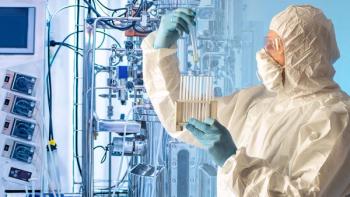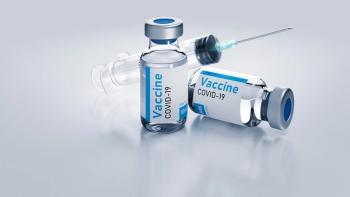
- BioPharm International-11-02-2011
- Volume 2011 Supplement
- Issue 8
Approaches for Flexible Manufacturing Facilities in Vaccine Production
With careful analysis to mitigate risk, disposable technology and process closure can enable adaptable designs and reduced costs.
According to the US Centers for Disease Control and Prevention's (CDC) vaccine price list, US vaccine manufacturers receive a wholesale price of between $9 and $109 per dose for pediatric and adult vaccines (1). For influenza vaccines, the wholesale price paid to manufacturers ranges from $5 to $9 per dose (2). Doses that reach the market early in the season command a higher than average price, and prices decline throughout the season. Any excess inventory is destroyed at the end of the influenza season. Small batch sizes, the high cost of labor involved in egg or cell culture based production, and the cost of filling results in a profit margin that is quite low relative to that of the rest of the biopharmaceutical industry. Such low profit margins affect manufacturers' willingness to invest capital in a commodity business such as influenza or other vaccines. This consideration is particularly true when providing vaccines to developing countries, where the price for vaccines per dose are a fraction of those in the US. Table I provides average reimbursement prices paid by UNICEF in 2010 and vaccine prices in high income countries are represented by the CDC vaccine price list for 2011 (1, 3).
The pressure to reduce facility-investment costs and the cost of goods manufactured is a primary driver in the paradigm shift occurring in the industry's approach to facility design. The objective is to be more competitive, reduce risk, and provide higher value for investments. Production facilities must be flexible, cost effective, and provide more rapid construction and start-up. In addition, for pandemic influenza vaccines, a surge capacity is crucial to produce the maximum number of vaccine doses in the shortest time. Cell-culture influenza vaccine processes being developed offer many advantages in scalability, but traditional manufacturing facilities may not be available or adaptable to produce such vaccines thus presenting a bottleneck to their commercialization.
Table I: Cost for single and combination vaccines in low- and high-income countries.
Applicable to both clinical and full-scale manufacturing, single-use systems have become a mainstay of flexible and adaptable process and facility design. Although disposables provide opportunities, they also introduce challenges for biopharmaceutical manufacturing. This article discusses facility and process-design issues that should be examined when considering or implementing single-use technology.
THE EFFECT OF THE ROOM ENVIRONMENT
To evaluate the potential risk of contamination or adulteration involved in a production process, one must first examine the potential sources, which include carryover between batches, cross-contamination between products, and the introduction of contaminants from the environment, raw materials, or from inadequate cleaning.
In the US, FDA recognizes the cleanroom standards of the International Organization for Standardization, specifically ISO 14644-1 (4). European standards go further in distinguishing between static conditions at rest and dynamic conditions in operation (5). Controlled nonclassified (CNC) is a classification often used in noncritical areas in GMP manufacturing facilities. CNC areas are designed to provide a consistently controlled environment, but are not monitored to the same levels as ISO or Grade classified areas. The International Society of Pharmaceutical Engineering (ISPE) has similarly defined CNC as a nonclassified room environment where closed processes and their immediate support systems may be located. CNC spaces are cleanable, have access control, and are served with filtered HVAC air, but do not have the ridged procedural controls and personal gowning requirements of classified areas.
Room classifications and the heavy burden they carry were considered in a recent article prepared by biopharmaceutical industry representatives that examined environmental controls in the context of current manufacturing technology (6). The authors discussed the rational for breaking the cleanroom paradigm and lowering room classifications using risk-based approaches to reduce capital and operating costs.
SYSTEM CLOSURE—AN ENABLING TECHNOLOGY
Closed processes or systems use process equipment that does not expose the product to the immediate room environment and therefore prevent entry of contaminants (7). In the case of biocontainment, the system must also prevent escape of organisms or products. Closure is usually achieved through aseptic connections or by using filtration in the system as a means of rendering it closed. Additions to or withdrawals from the system must be done in a manner that ensures the integrity of system closure. It is important to note that it is the manufacturer's responsibility to both define system closure, and to prove closure for each process step. Importantly, the loss of a closed state due to routine or infrequent activities (e.g., maintenance and cleaning) does not negate the need for the use of closure as a key aspect of the facility's design. In such cases, validated procedures for reinstituting the closed state should be part of the standard operating procedures for manufacturing. Newberger and Melton discuss brief exposure in the context of API production facility design, and it is an important concept that should also be incorporated into risk-based approaches to system closure (7).
It can be difficult or impractical to fully close some processes, for example inoculum preparation, where robotics or isolators are impractical because of high cost or operator resistance respectively. In such situations, open processing is acceptable, providing that it is protected by a suitable, monitored room environment.
In closed-system processing, the room environment becomes secondary to the integrity of the closed systems and any connections made to introduce, remove, sample, or analyze the contents. In an open operation, which is not subsequently filtered, the cleanroom environment is relied upon to reduce the probability of contamination from room air. If the process is rendered closed (e.g., by filtration into a closed tank or bag), the room environment does not affect the integrity of the system. With a closed process that is never exposed to the room, the environment does not affect the system at all.
CLOSURE ANALYSIS
Closure analysis is a systematic evaluation of the risk in each process step, based on the process control level required and the closure level used for particular connections. At it simplest, closure analysis examines critical unit operations and each connection into or out of the closed-system boundary. Closure analysis generally consists of the following steps:
- Identify the system boundary and all penetrations of the unit operation's closed-system boundary.
- Evaluate each particular unit operation according to its bioburden control specification (e.g., controlled bioburden, low bioburden, and aseptic).
- Evaluate each connection according to agreed closure definitions (e.g., open, briefly exposed, cleaned, closed, or unexposed).
- Calculate a risk ranking based on the product of the bioburden control ranking and the closure ranking for the particular connections being evaluated.
- Evaluate connections with unacceptable risk ranking using a closure fault tree (see Figure 2). Modify the closure system, or upgrade the environment for points having unacceptable risk, or ensure that downstream steps mitigate the risk acceptably (e.g., by filtration).
Figure 1: Distinction of open, closed and rendered closed processes in classified and controlled nonclassified (CNC) spaces.
All of the connections' risk rankings can be tabulated to give a snapshot of the system, and a frequency histogram can show the number of connections considered to be higher risk; the objective is then to evaluate ways to move these to lower risk rankings. Connections that are inconsistent with bioburden control; identified for redesign, increased environmental or downstream controls; or connections that are not clearly defined in documentation will all require further attention.
FUTURE FACILITY CONCEPTS
By leveraging closed systems and maximizing the use of single-use systems, it is possible to design a facility that allows work areas to be combined and room classifications to be lowered. Such a facility offers many benefits; in studies done by CRB for a number of biophamaceutical clients where the FutureFacility concepts were utilized and the corresponding facility costs, utility costs, and cost of goods were examined, advantages included:
- Reduced manufacturing area (by 15–30%).
- Reduced HVAC (resulting in reductions in room classifications, gowning, cleanroom areas, air changes per hour, fan power demand, number of air handling units, and maintenance).
- Reduced utilities (single-use systems can reduce clean steam and water-for -injection requirements by up to 80–90%, chilled water and steam demands are reduced by up to 60%, and wastewater is also reduced.
- Reduced construction and start-up schedule (by 30–50%).
- Possible reduced cost of goods.
Figure 2: Fault-tree analysis for system closure.
In the FutureFacility concept (see Figure 3) for a vaccine manufacturing plant, a contained zone is provided for the virus work, while the nonviral support functions, as well as the post inactivation steps are combined into a single room. Such an approach reduces the circulation areas of corridors and airlocks, maximizes the efficiency of labor, and offers the maximum in flexibility for changing processes. Each unit operation is connected to utility plates in the ceiling and can be readily relocated to accommodate various processes. Even the containment area can be demounted and removed, should biocontainment no longer be necessary, for example if a monoclonal antibody operation is inserted into the facility. Inoculum preparation operations in the FutureFacility utilize isolators with integrated incubators and directly adjacent seed bioreactors. Cell buildup for the viral process is outside of the containment zone, and transfer into the production bioreactors at the final stage.
Figure 3: FutureFacility concept for vaccine-manufacturing facility.
The design and construction schedule for this sort of facility is significantly shorter than a traditional stainless steel facility. Time spent on design and construction is reduced because of lower system and building complexity and reduced piping requirements, and procurement of single-use systems avoids the long lead times associated with stainless steel equipment. Time saved on design and construction can be used to improve time-to-market, or if the project initiation is delayed, it can be used to allow additional process development time, or to have more certainty in clinical results before committing to major capital investments in a facility (see Figure 4).
Figure 4: Schedule showing how shorter project times compared with those of a traditional stainless-steel facility can allow for improved time to market; or for added time for process development, clinical result generation, and business planning before committing to major capital investments.
CONCLUSION
Process closure provides superior product protection and permits lower room classifications. A risk-based approach must be used to review the state of process system closure and to identify all connection points, evaluating their suitability with regard to the process and quality requirements. Manufacturing facilities that use these closed-system processes in combination with single-use technologies offer process flexibility; adaptable and expandable design; shortened construction, start-up, and validation schedules; as well as decreased utility costs, all of which have the potential to reduce the cost of vaccines.
REFERENCES
1. CDC, "Vaccine Price List,"
2. UNICEF, "Vaccine Price Data 2001-2010,"
3. President's Council of Advisors on Science and Technology, "Report to the President on Reengineering the Influenza Vaccine Production Enterprise to Meet the Challenges of Pandemic Influenza" (Aug. 2010).
4. ISO 14644-1, Cleanrooms and Associated Controlled Environments – Part 1: Classification of Air Cleanlines Cleanroom Standards (ISO, 1999).
5. European Commission, EudraLex Vol. 4: Good manufacturing practice (GMP) Guidelines, Annex 1: Manufacture of Sterile Medicinal Products (2003).
6. S. Chalk et al., BioPharm Intl. 24 (8) 44–65 (2011).
7. Newberger et al., Pharm. Eng. 28 (6), 1–7 (2008).
Articles in this issue
about 13 years ago
Technical Forum: Disposable Chromatographyabout 14 years ago
The Evolution from Fixed to Single-Use Systemsabout 14 years ago
Emerging Bioprocessing Methodsabout 14 years ago
A Brief History of Single-Use Manufacturingabout 14 years ago
BioPharm International, November 2011 SupplementNewsletter
Stay at the forefront of biopharmaceutical innovation—subscribe to BioPharm International for expert insights on drug development, manufacturing, compliance, and more.





